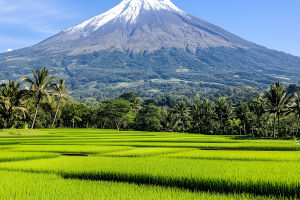Fireworks captivate millions every year with their spectacular bursts of color and light, turning ordinary nights into magical celebrations. But have you ever wondered what creates those brilliant reds, greens, blues, and golds that light up the sky?
The dazzling colors of fireworks are not random—they come from precise chemical reactions and physics principles. In this article, we will explore how fireworks get their colors and reveal the fascinating science behind these vibrant displays.
The Basics of Fireworks Composition
To understand how fireworks produce colors, it's important to know their basic structure. A typical firework shell contains several key components: a fuel source, an oxidizer, a binder, and color-producing chemicals called "colorants." When ignited, the fuel and oxidizer react to produce heat and gas, causing the firework to explode and release its colorful sparks into the air.
How Heat Produces Light
The heat generated by the explosion excites the atoms of the colorants inside the firework. When these atoms absorb energy, their electrons jump to higher energy levels. Almost immediately, the electrons fall back to their original states, releasing the excess energy as light. This process is called atomic emission.
The color of the light emitted depends on the specific energy difference between electron levels in the atoms, which varies by element. This is why different chemical elements produce different colors when heated.
Common Elements That Create Firework Colors
Each color in a firework corresponds to certain elements:
• Red: Strontium salts or lithium compounds produce bright red flames.
• Green: Barium compounds generate green hues.
• Blue: Copper compounds are responsible for blue colors, but creating pure blue fireworks is one of the more challenging tasks for pyrotechnicians.
• Yellow: Sodium compounds create vibrant yellow shades.
• Orange: Calcium salts add orange tones.
• White and Silver: Metals like magnesium, aluminum, or titanium burn with bright white or silver sparks.
By mixing these elements in precise amounts, pyrotechnicians craft the wide spectrum of colors seen in fireworks.
The Role of Temperature in Color Quality
The temperature of the flame plays a crucial role in how vivid the colors appear. If the temperature is too high, the metal atoms can burn too quickly, causing the colors to become washed out or white-hot. On the other hand, too low a temperature may not excite the atoms enough to produce bright colors.
Experienced fireworks makers carefully balance the composition to control flame temperature, ensuring the colors are both vivid and lasting.
Shapes and Patterns: The Art Behind the Science
Beyond color, fireworks also produce stunning shapes and patterns in the sky. The arrangement of "stars"—small pellets containing colorants—inside the shell determines the design. When the shell bursts, these stars ignite and travel outward, creating the visual effects.
The timing of the explosions and the layering of chemical compositions can create multi-colored effects, sparkling trails, or even shapes like hearts and stars.
Environmental and Safety Considerations
While fireworks are beautiful, their chemical components must be handled with care. Many metal salts used for colors can be toxic or polluting if not managed properly. Innovations in "green" fireworks are emerging, aiming to reduce harmful chemicals and minimize environmental impact without compromising color brilliance.
Safety during production and display is also critical. Pyrotechnicians follow strict guidelines to prevent accidents, as even small mistakes with explosive materials can be dangerous.
Why Fireworks Color Science Matters
The science of fireworks colors blends chemistry, physics, and artistry. Understanding how different elements produce specific colors helps designers create more impressive displays and enables innovation toward safer, more eco-friendly fireworks.
It's amazing to realize that each breathtaking burst of color is a result of precise atomic interactions happening in a fraction of a second—an intersection of natural laws and human creativity.
Have You Experienced the Magic?
Next time you watch fireworks light up the sky, think about the fascinating science behind those shimmering colors. What's your favorite firework color or pattern? Have you ever tried to learn more about how fireworks work? Feel free to share your thoughts or questions—I'd love to hear about your experiences with these colorful spectacles.


